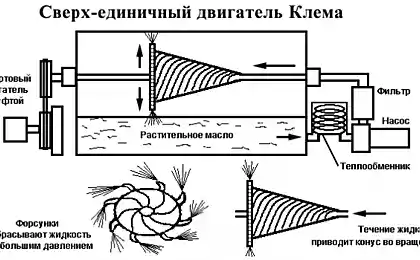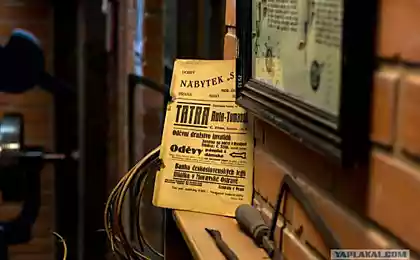229
Perpetual motion -- inventing the impossible
Human nature is such that for centuries people have tried to create something that works by itself, without any influence from outside. This device was later defined as Perpetuum Mobile or Perpetual Motion. Many famous scientists of different times unsuccessfully tried to create it, including the great Leonardo da Vinci. He spent several years creating a perpetual motion machine, both by improving existing models and trying to create something fundamentally new. In the end, having figured out why nothing worked, he was the first to formulate the conclusion that such a mechanism could not be created. However, the inventors were not convinced, and they are still trying to create the impossible.
It is not known who and when the first tried to create a perpetual motion machine, but the first mention of it in manuscripts dates back to the XII century. The manuscripts belong to the Indian mathematician Bhaskara. In them, in poetic form, a wheel is described, with tubes attached to it around the perimeter, half filled with mercury. It was believed that due to the flow of fluid, the wheel itself will rotate indefinitely. On about the same principle, several more attempts were made to create a perpetual motion machine. As usual, without success.
Another prototype perpetual motion machine is based on the use of Archimedes' law. In theory, it was believed that the chain, consisting of hollow tanks, due to the pushing force will rotate. Only one thing was not taken into account - the pressure of the water column on the lowest tank will compensate for the repulsive force.
Another inventor of the perpetual motion machine is the Dutch mathematician Simon Stevin. According to his theory, a chain of 14 balls, thrown through a triangular prism, should move, because on the left side of the balls are twice as many as on the right, and the lower balls balance each other. But even here the insidious laws of physics prevented the plans of the inventor. Although the four balls are twice as heavy as the two, they roll over a flatter surface, hence the force of gravity acting on the balls on the right is balanced by the force of gravity acting on the balls on the left, and the system remains in equilibrium.
With the advent of permanent (and especially neodymium) magnets, the inventors of perpetual motion machines were reinvigorated. There are many variations of electric generators based on magnets, and one of their first inventors, Michael Brady, in the 90s of the last century even patented this idea.
And the video below shows a fairly simple design that anyone can make at home (if you get enough magnets). It is not known how long this thing will spin, but even if you do not take into account the loss of energy from friction, this engine can only be considered conditionally eternal, because the power of the magnets weakens over time. But still, the spectacle is fascinating.
Of course, we have not talked about all versions of perpetual motion machines, because human imagination, if not infinite, then very inventive. However, all existing models of perpetual motion machines have one thing in common – they are not eternal. This is why the Paris Academy of Sciences decided not to consider perpetual motion designs since 1775, and the US Patent Office has not issued such patents for more than a hundred years. The International Patent Classification still contains sections for certain perpetual motion machines. But this only concerns the novelty of design solutions.
To sum up, there is only one thing: although it is still believed that the creation of a truly perpetual motion machine is impossible, no one forbids trying, inventing and believing in the impossible.
Source: techcult.ru
Scientists from the United States and Russia will develop a new drug for the brain
Lose weight having fun—on the Sunny diet























